Murders at Karlov Manor Mechanics
Some say the game is afoot. And as the new cards from Murder at Karlov Manor are going to be setting foot in your games very soon, it's best if you got some initial impressions of the new keywords and other game mechanics. They are mysterious, but with some good old-fashioned detective work, we can crack the case.
Disguise
Obviously, there's a murderer on the loose, so appearing to be someone else can be quite beneficial, especially if you're … you know. With the new disguise mechanic, your creatures' true identities can stay hidden until the time is right to reveal them.
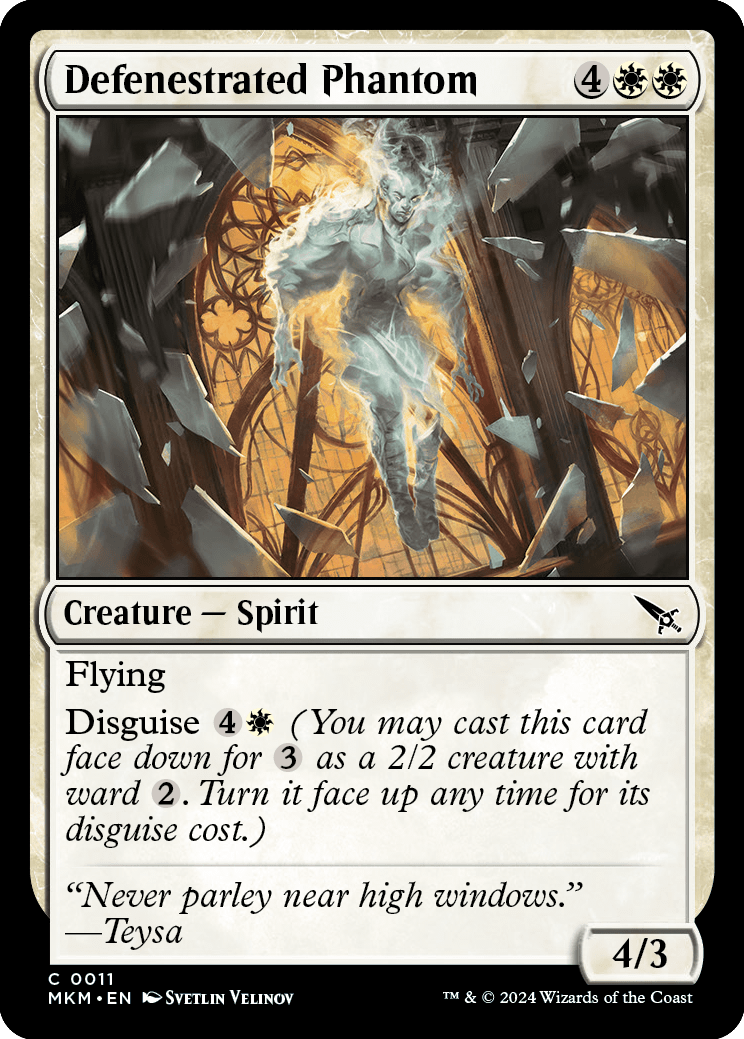
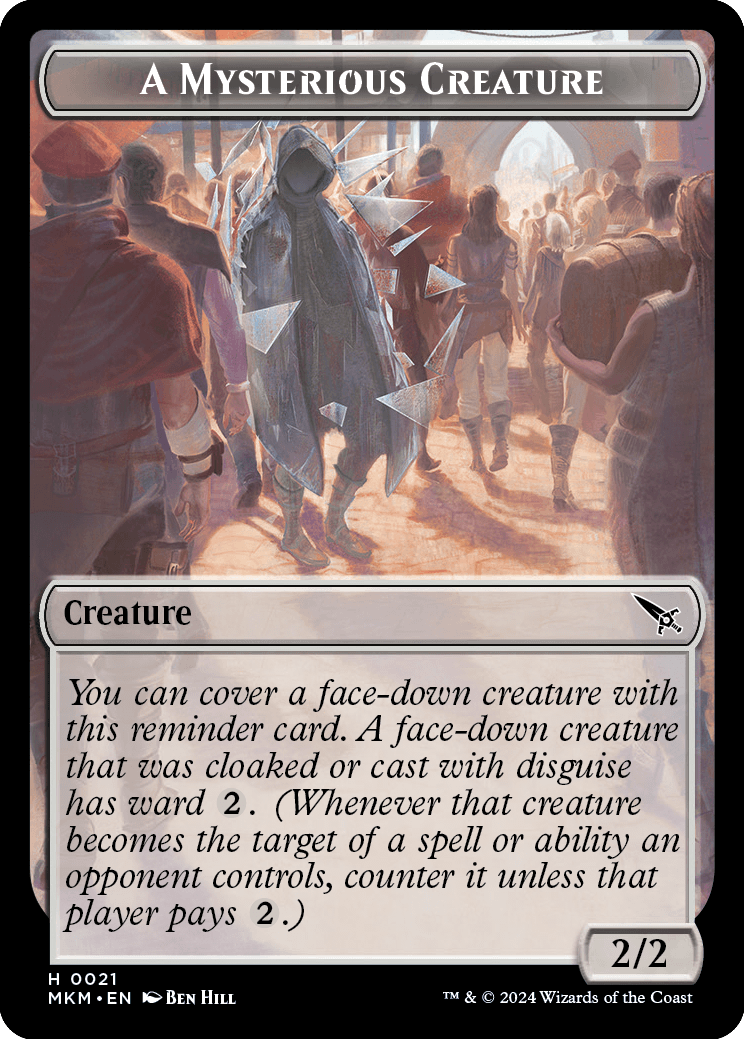
Remember morph? Don't throw everything you know about it out the window. It's just getting a little upgrade. If a card has disguise, you can cast it face down. Keep its front face hidden so no other player knows what it really is. It becomes a face-down creature spell, which means it's colorless, it's 2/2, and it has no name and creature types. It has ward {2} and no other abilities. It also has no mana cost, so it has mana value 0, but to cast it, you pay an alternative cost of {3}.
Resolving a face-down creature spell results in, unsurprisingly, a face-down creature. It still has no name or creature types. It has ward {2} and no other abilities. Its mana value is still 0. It's a creature, and it can do all the awesome things creatures can do: attack, block, get suited up with sweet Auras and Equipment, get counters put on them, and so on. You can look at face-down permanents you control any time to remind yourself who they really are. Other players can't look at your face-down permanents, and you can't look at theirs unless an effect says you can. That's the whole idea. The helper card pictured above is an optional game accessory that you can use to give your face-down permanents a little more battlefield presence until you turn them face up.
You can cast a card with disguise face down from any zone if you have permission to cast the card. In some cases, such as if you're casting it from exile, it won't be much of a surprise to your opponent, but that's okay. There may still be advantages to having a creature start face down so you can later turn it face up. And remember that you don't have to cast it face down at all. You can always just forego the disguise and cast the card as normal, paying the mana cost and having the creature bravely step out into the world as its true self. It's their funeral.
Now that you control a face-down permanent, you may find that the time is right to reveal your subterfuge. Any time you have priority, you can turn a face-down permanent you control face up by paying its disguise cost. This happens immediately and doesn't use the stack, so it can't be responded to. The resulting face-up permanent immediately has its true characteristics. That innocuous face-down 2/2 creature your opponent thought was safe to trade with in combat? Nope, it was actually a 4/3 Defenestrated Phantom.
Once blockers have been declared, a creature that was blocked by a nonflying creature and gained flying (perhaps because it was revealed to be a Defenestrated Phantom) will stay blocked. If you want the flying to matter for that combat, you need to turn the Phantom face up before blockers are declared. Combat strategy and misinformation will play vital roles in your success.
Turning a permanent face up doesn't cause it to re-enter the battlefield. It's still the same permanent, so any Auras or Equipment that were attached to it stay attached to it. Any counters that were on it stay where they were. If it was tapped, it stays tapped. If it was attacking, it stays attacking, and so on. Keep a lookout for abilities that trigger when a permanent is turned face up.
Any time you control more than one face-down permanent, you must make sure they can easily be differentiated from one another. You're not allowed to mix them up to confuse your opponent. The order they entered the battlefield should be clear. You can use dice or other markers to do this, or you can clearly place them in order on the battlefield. For example, if you attacked with one of your three face-down creatures last turn, it should be clear to all players which creature it was that attacked.
Crucially, as a face-down permanent leaves the battlefield and also as the game ends or as its owner leaves a multiplayer game, it must be revealed to all players. This is to ensure that all permanents cast face down actually have an ability that allowed them to be cast that way. This is especially important in tournament games.
Cloak
Like we did with morph, we also tweaked manifest to keep up with modern battlefields. Introducing cloak. If you're instructed to cloak a card, put that card onto the battlefield face down. It's a 2/2 colorless creature with no name and no creature types. It has ward {2} but no other abilities. It has no mana cost. In fact, the resulting creature looks exactly like the face-down creature you get if you cast a creature spell using disguise.
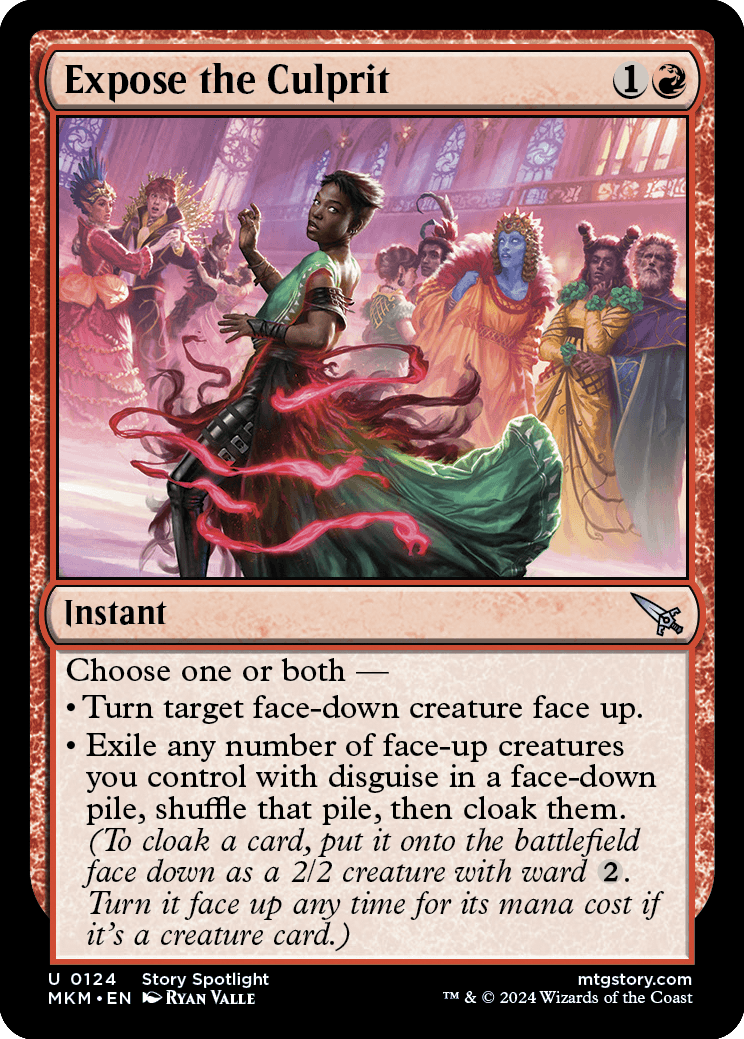
Under each cloak lies a great mystery, at least for your opponents. Again, you're free to look at them at any time. You can turn a cloaked creature face up any time you have priority if the actual card is a creature card. To do this, reveal it and pay its mana cost. The creature turns face up and immediately has its true characteristics. This can be quite the surprise during combat or at other inopportune times for your foes.
Every once in a while, you may cloak a card with abilities that allow you to turn it face up in other ways, such as disguise or even morph. If you are so fortunate, you can use those abilities to turn the creature face up. For example, if you cloak a creature card with disguise, the face-down creature can be turned up for either its mana cost (using cloak) or its disguise cost.
All the rules for handling face-down permanents in the disguise section also apply to cloaked permanents. Keep them clearly separated on the battlefield, reveal them as they leave, and use them wisely to keep your opponents off balance.
Investigate
Returning in this set is investigate, a keyword action that will have you digging deeper into the goings-on. When you're told to investigate, you create a Clue token. A Clue token is a colorless artifact token with "{2}, Sacrifice this artifact: Draw a card." Not only are extra cards always welcome, but some cards in the set have abilities that reward you for sacrificing artifacts.
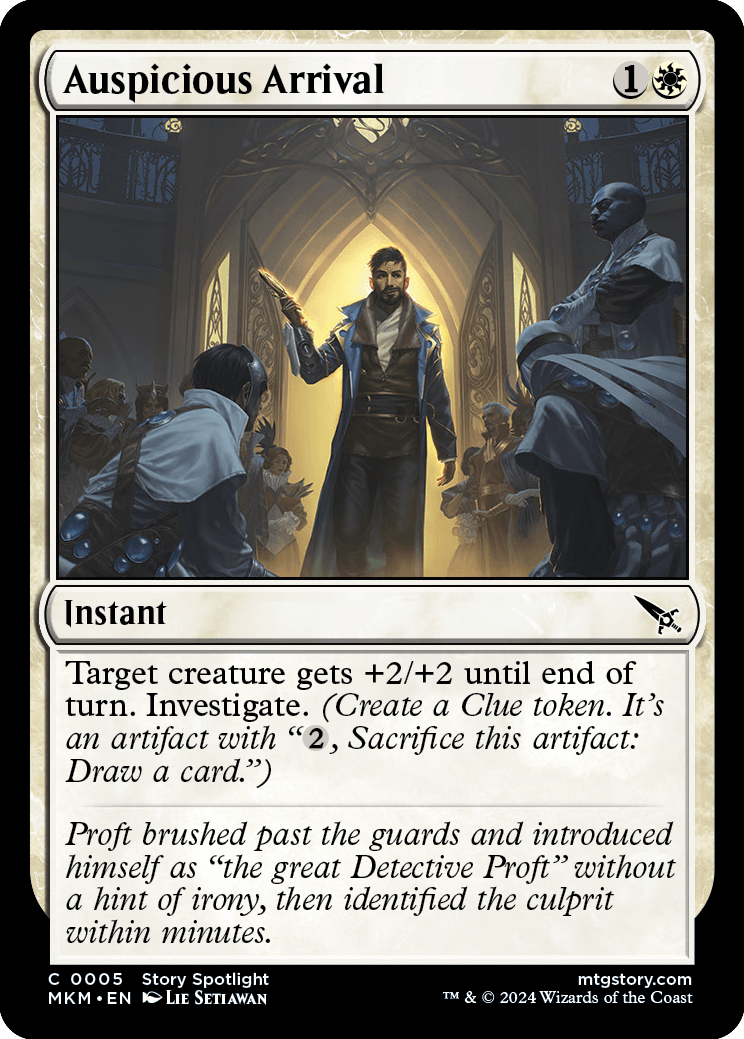
Suspect
Everyone's guilty until proven innocent. If you suspect a creature, that creature picks up a new designation: suspected. A suspected creature has menace and can't block for as long as it remains suspected.
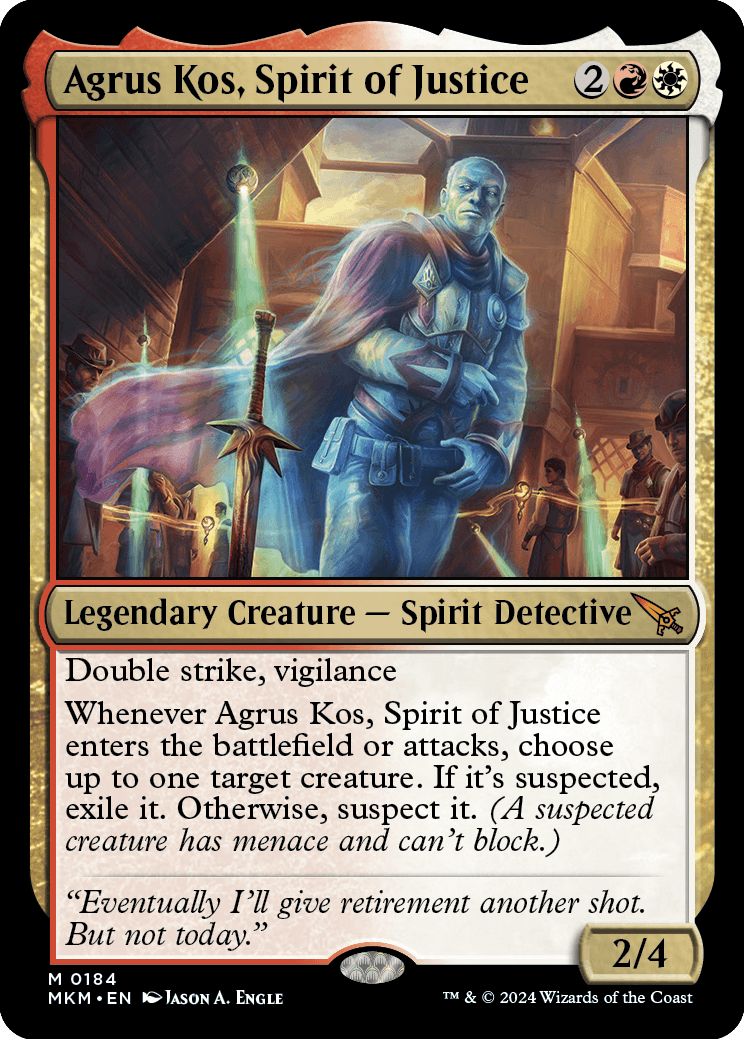
Distrust is hard to shake on the streets of Ravnica. Once suspected, a creature remains suspected until it leaves the battlefield or another effect causes it to no longer be suspected. If a suspected creature stops being a creature, it remains suspected. (If anything, you should suspect it way more now.)
Collect Evidence
Hard evidence can be almost impossible to come by, but if you want to make the case, that's what you need. The new keyword action collect evidence always appears with a number. Collecting evidence is a cost that you may be asked to pay in a variety of contexts. It can be part of the activation cost of an ability or an additional cost of a spell. It can even be the cost imposed by a ward ability.
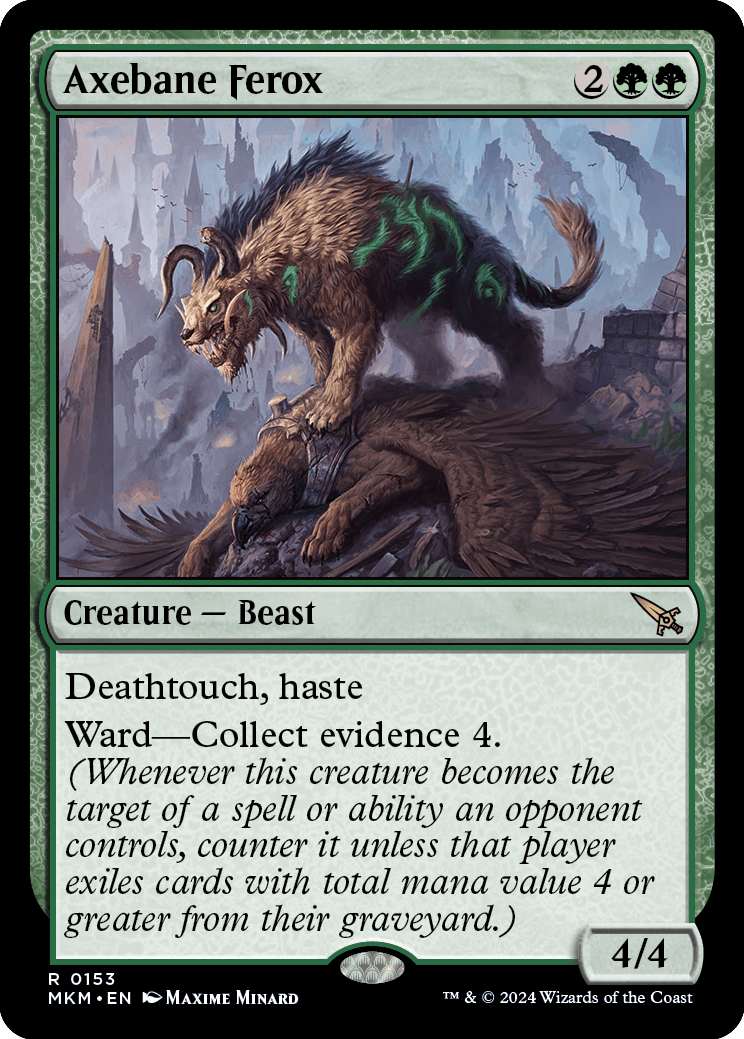
Each time you're asked to collect evidence, exile any number of cards from your graveyard with total mana value of the indicated number or greater. For example, to collect evidence 6, you could exile a single card with mana value 6 from your graveyard, cards with mana values 1 plus 2 plus 2 plus 1. Or even 1 plus 1 plus 2 plus 2 plus 1 plus … The point is, any number of cards, even extra ones if you really want to. If you're given a choice to collect evidence but can't cover the full amount, you can't collect evidence at all and you can't exile any cards from your graveyard.
Reading the signs and following the footsteps can lead to even greater payoffs. Some spells have optional additional costs of collecting evidence. These spells will have additional or alternative effects that happen "if evidence was collected." For permanent spells with such costs, they may have enters-the-battlefield triggered abilities that trigger only if evidence was collected. In both cases, this means if you chose to pay the additional cost of collecting evidence.
Cases
Really, what are we all here for if not to solve some cases? Case is a new type of enchantment debuting in this set.
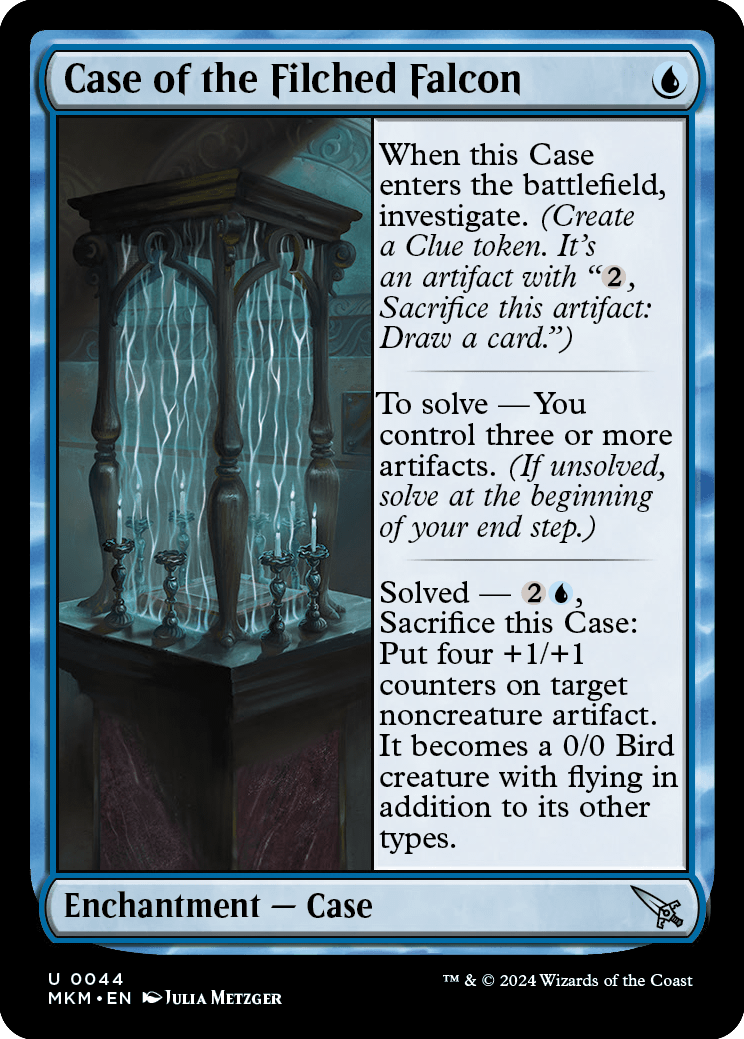
Individual Cases each have three abilities. The top ability is always active. The middle ability, preceded by "to solve," sets out the conditions under which you can solve the Case. At the beginning of your end step, if the Case is unsolved and if you've met the condition described in the middle ability, the Case becomes solved. The described condition must be true both as your end step begins and as the "to solve" ability tries to resolve. For Case of the Filched Falcon, if you control three or more artifacts as your end step begins, the "to solve" ability will trigger and go on the stack. If you still control three or more artifacts as that ability tries to resolve, the Case will be solved.
Now that the Case is solved, the middle ability won't trigger again. Additionally, the last ability, preceded by "solved," becomes active. If that ability is an activated ability, it can now be activated. If it's a triggered ability, it can now trigger. If it's a static ability, that ability now functions.
Given that a Case is solved, it stays solved until it leaves the battlefield, even if it changes controllers. If a Case does leave the battlefield and then returns, it's a new Case that returns unsolved and must be solved again.
Preorder Murders at Karlov Manor at your local game store, online at Amazon, and elsewhere Magic products are sold before its worldwide release February 9.

